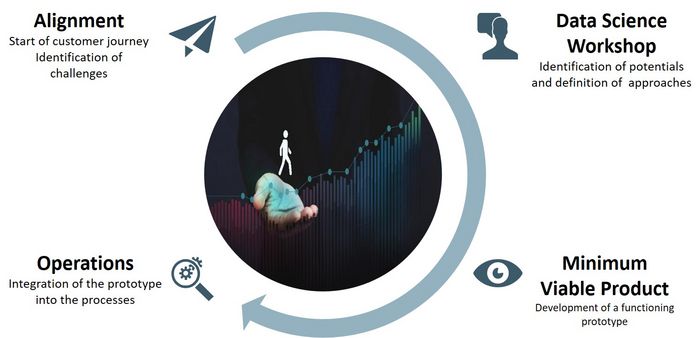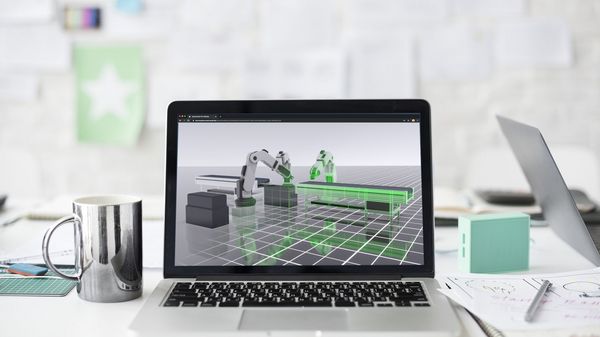
Data science opens up many possibilities to acquire new knowledge from data, to optimise existing systems and processes, and even to develop new business fields. We advise and support companies in using data science for their purposes and to take the next step in the digitalisation process – whether it is the next digitalisation step, the right machine learning approach, optimisation potentials in processes, profitable data evaluation or making data-driven decisions.
In addition to technical expertise, successful data science projects also require specialist knowledge of the industry itself and a deep understanding of development, design, production and support. Bertrandt’s 40 years of know-how in various industrial sectors is therefore a major advantage compared to pure big data service providers. Our data science solutions are applied in particular in the fields of manufacturing, autonomous driving, medical technology, Industry 4.0 and business analytics
Some of the services in our data science portfolio
- Determination and exploitation of optimisation potentials
- Efficient management and structuring of large quantities of data
- Training of artificial intelligence for automation
- Pattern recognition and prediction of deviations and systems
- Clear representation of parameters (dashboards)
- Efficient troubleshooting in the event of system failures
Examples of data science projects
Anomaly detection in the vehicle powertrain
Unpleasant jerking of unknown origin occurs during gear changes. The jerk is correlated with other system parameters. The strength of the correlation provides information about the cause of the jerking. A key additional benefit is that automated anomaly detection will result in higher cost efficiency in future vehicle series.
Validation of data quality
Corrupted camera images are recorded during test drives. (Runtime) optimized image analyses are used for error detection. The improvements thus achieved include the early detection of quality problems in test data, (time-) optimised testing procedures, the avoidance of unnecessary test drives, and cost efficiency due to the filtering out of bad data.
Management scoring
The quality of a company’s management can only be evaluated subjectively. In order to provide a measurable evaluation of management quality, mathematical optimisation is applied to develop a reliable score. The consequences of introducing such a score are a data-driven derivation of necessary preventive measures and predictive calculations.
Learn more about our Data Science Services







